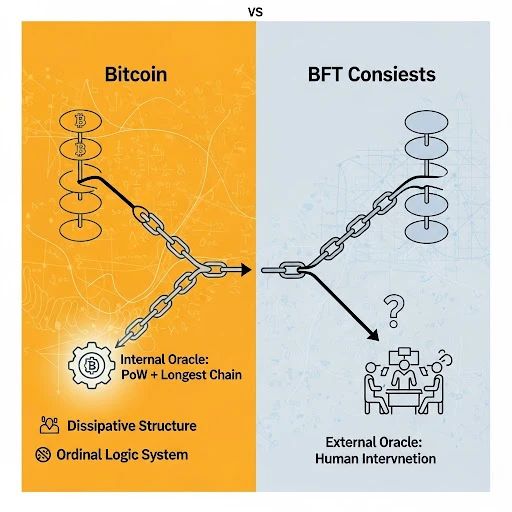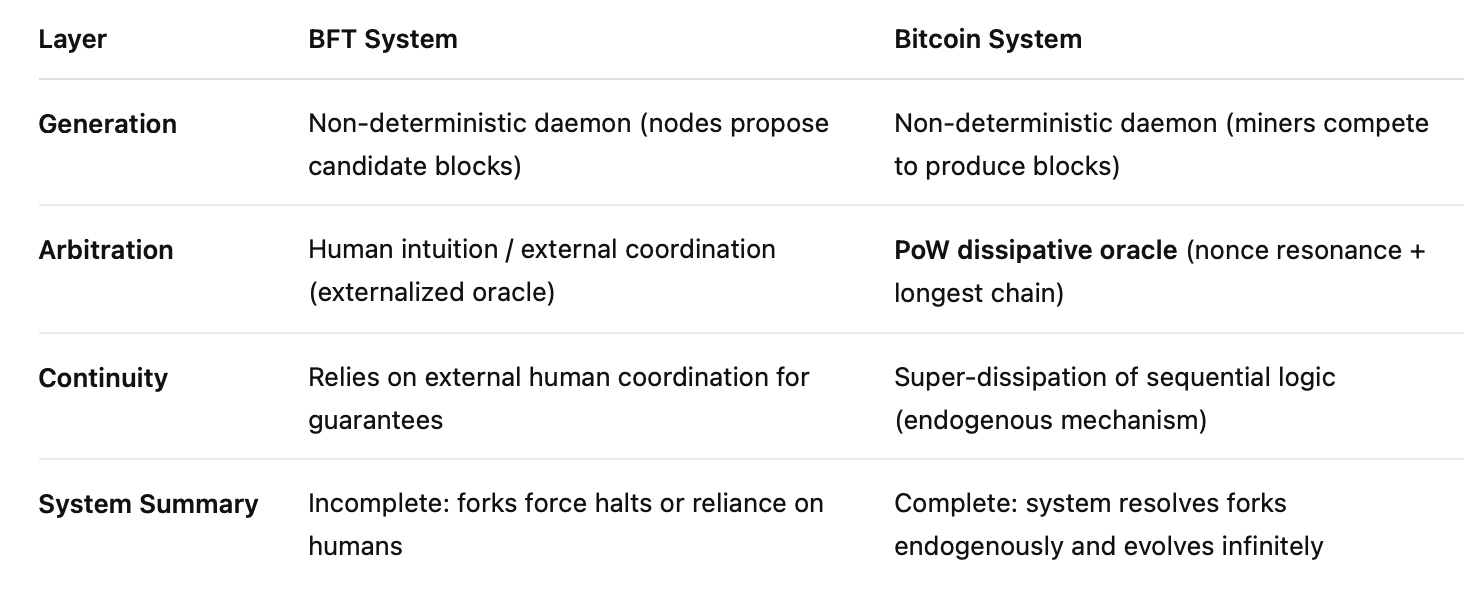
In formal logic, Gödel’s Incompleteness Theorems state: any sufficiently powerful and consistent formal system must be incomplete. This means there will inevitably exist propositions within the system that cannot be proven or disproven by its own logic — i.e., unavoidable paradoxes or self-reference problems.
In blockchain systems, this incompleteness manifests as a core governance dilemma: When multiple valid blocks appear at the same block height, how can the system select a single “correct” block solely through internal rules, without external intervention?
In other words, the completeness problem of blockchains can be defined as: Completeness Problem = How to resolve conflicting but valid branches (forks) purely within the system itself, without relying on external authority?
In BFT (Byzantine Fault Tolerant) consensus systems (including Ethereum after its transition to PoS), this inherent incompleteness is especially evident:
Conclusion: Incompleteness of BFT= At critical forks, the system cannot resolve conflicts endogenously or deterministically, requiring external “human intuition.”
This “intuition” resembles distributed neural resonance in the brain — consensus-forming but fundamentally an externalized oracle, not a native system component.
Bitcoin’s innovation lies in internalizing the arbitration mechanism for fork resolution directly into the protocol — via an automated oracle machine:
Here, the dissipative structure is the key abstraction:
Resolving a single fork isn’t enough. A truly complete system must ensure infinite continuity, handling forks across the entire future evolution.
This requires the notion of an Ordinal Logic System:
Thus, a complete blockchain system =Turing Machine (generation)+ Oracle Machine (selection)+ Ordinal Logic (continuity)

Therefore, Bitcoin is not merely a distributed computing system or monetary network — it is a theoretically complete autonomous system, composed of Turing Machine (possibility) + Oracle Machine (conflict resolution) +Ordinal Logic (continuity).